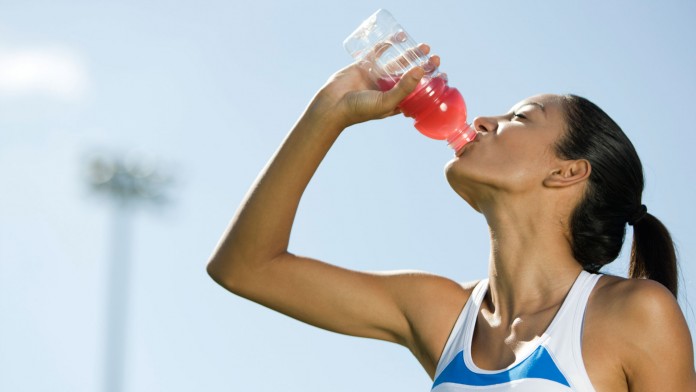Bottles of colorful liquids are often spotted in the gyms, sports arenas and running benches where athletes gulp them down after working out. Sports drinks come in various flavours, sizes and contain different nutrients but do you know how did these seemingly magical drinks come about?
88 year-old medicine drink – Lucozade

The earliest record of sports drink dates back to 1927, where a chemist named William Owen concocted a mixture of glucose and water as a liquid for replenishing the lost calories and energy in ill patients. The drink was known in Britain as “Glucozade”, under the brand name Lucozade. By mid-1980s, the supposed ‘medicine’ became marketed as a drink to replenish energy for the mass public instead of medical usage in hospitals. The unexpected twist of target consumers was done by modifying Lucozade’s flavor and ingredients, which managed to appeal to the public market via collaborations with sports teams and organisations.
Campus idea – Gatorade

Another prominent pioneer sport beverage came from Gatorade in 1965, where the coach of University of Florida and a team of university physicians tried to analyze for remedies to tackle heat-related conditions suffered by his players. They concluded that the lack of electrolytes and carbohydrates, as a result from physical exhaustion and sweat, were the 2 major causes for the players’ deteriorating health conditions. Hence, they formulated a drink that contained these elements. ‘Gatorade’ was thus created and the Gator team of players won the Orange Bowl for the first time in their school history and the drink thus became a widely-popular sports drink thereafter till now.
Commemoration Drink – 100PLUS

Fraser and Neave, Limited (F&N) created 100PLUS to commemorate its 100 years of history in 1983 as a symbol of the company’s hope and ambition. This isotonic drink is a combination of fluids, electrolytes and carbohydrates that hydrate and replenish energy and water lost from our body during physical activities. With constant product innovation and research, 100PLUS isotonic drinks now come in a variety of flavour and forms to cater to the different needs of athletes and consumers.
Inspiration from curing jetlag – RedBull

In 1987, another major sport beverage was introduced into the market which contains other ingredients besides glucose – it is none other than the caffeinated-taurine drink, RedBull. This energy drink concept was started by Dietrich Mateschitz and his partner, Chaleo Yoovidhya, where they drew inspiration from Krating Daeng, a Thai energy drink that alleviated Mateschitz’s jet lag. RedBull was initially targeted at sportsmen who were active in extreme sports such as snowboarding, windsurfing and Formula 1 racing.
What’s next to come?
The history of sport beverages is indeed an interesting yet odd one – the first of the many was not even intended for athletes in the first place! Who would have thought an ill person’s drink could become a daily energy booster for healthy and fit individuals as well? With the evolving sport communities and market segments, sport drinks are increasing in variety and choices to suit the different preferences of athletes and non-athlete consumers. It is therefore not a surprise that the sport beverage industry continues to remain an attractive market where the unpredictable and unexpected can happen, just like how it was created and made for its current purposes.


